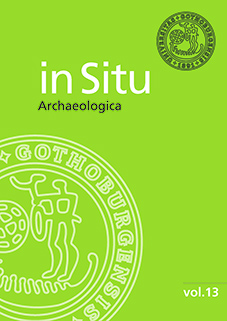Byns vara eller icke vara, är det frågan ?
By och bebyggelse i sydvästra Skåne 400–1800 e.Kr.
DOI:
https://doi.org/10.58323/insi.v13.12631Nyckelord:
bebyggelsearkeologi, landskapsarkeologi, romersk järnålder, folkvandringstid, medeltid, historisk tidAbstract
The aim of the study was to investigate the concept of village and settlement patterns in a long-term perspective in the southern part of Sweden. For whom were villages a successful concept and was one definition really enough to describe the role villages played in different societies ? All excavated farmsteads in the period AD 400–1800 were registered in a GIS database that was used for large-scale analysis. Trends in ups and downs in the settlements at different times became visible. Large farm units/estates influenced village formation due to control over land and the ability to organize people and agrarian production. Village nucleation was considered as a precondition for state formation, as it guaranteed a stable and continuous transfer of agrarian surplus through taxes.
Nedladdningar
Downloads
Publicerad
Referera så här
Nummer
Sektion
Licens
Copyright (c) 2019 Katlin Schmidt Sabo, Bengt Söderberg

Det här verket är licensierad under en Creative Commons Erkännande 3.0 Internationell licens.
Författare som bidrar till In Situ Archaeologica har givit sitt medgivande att publicera sina artiklar under en Creative Commons-licens. Den ger tredje part vissa rättigheter till att nyttja materialet. Rättigheterna styrs av vilken licens verket är publierad under. Det åligger tredje part att sätta sig in i verkets creative common licens innan materialet används i eget syfte. Det är alltid författaren som har copyright till verket och allt nyttjande av tredje part förutsätter att ett tydligt erkännande ges till verkets upphovsperson, att en länk till licensen tillhandahålls.



